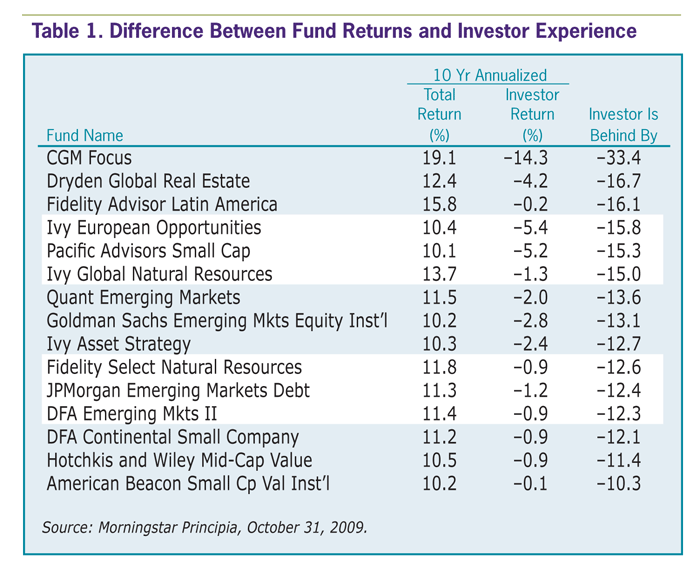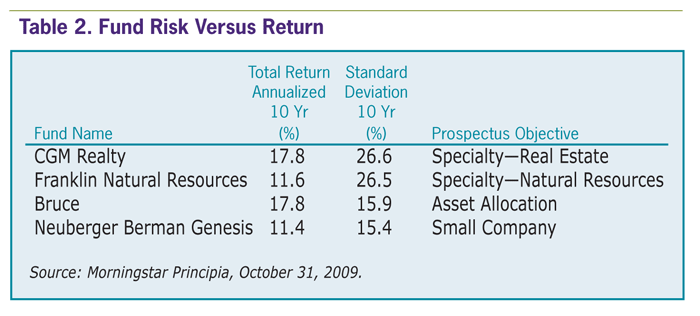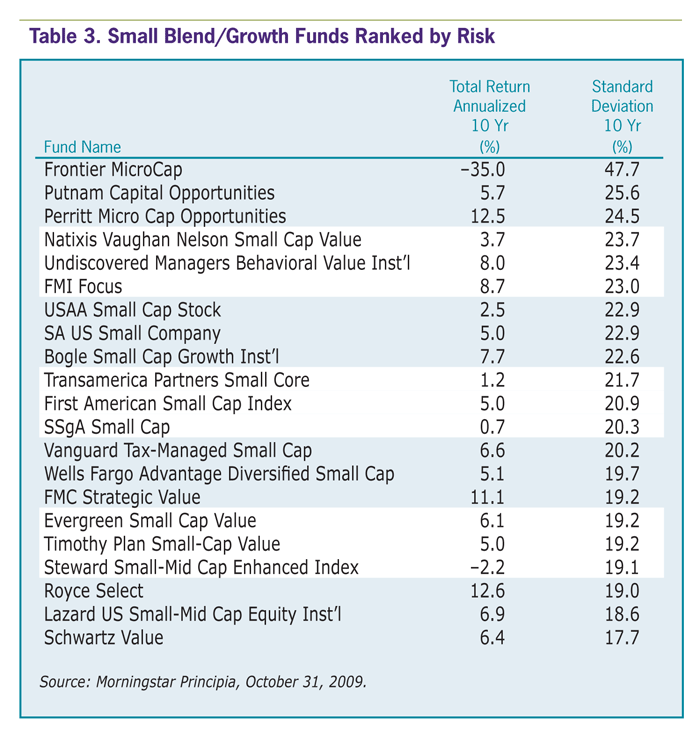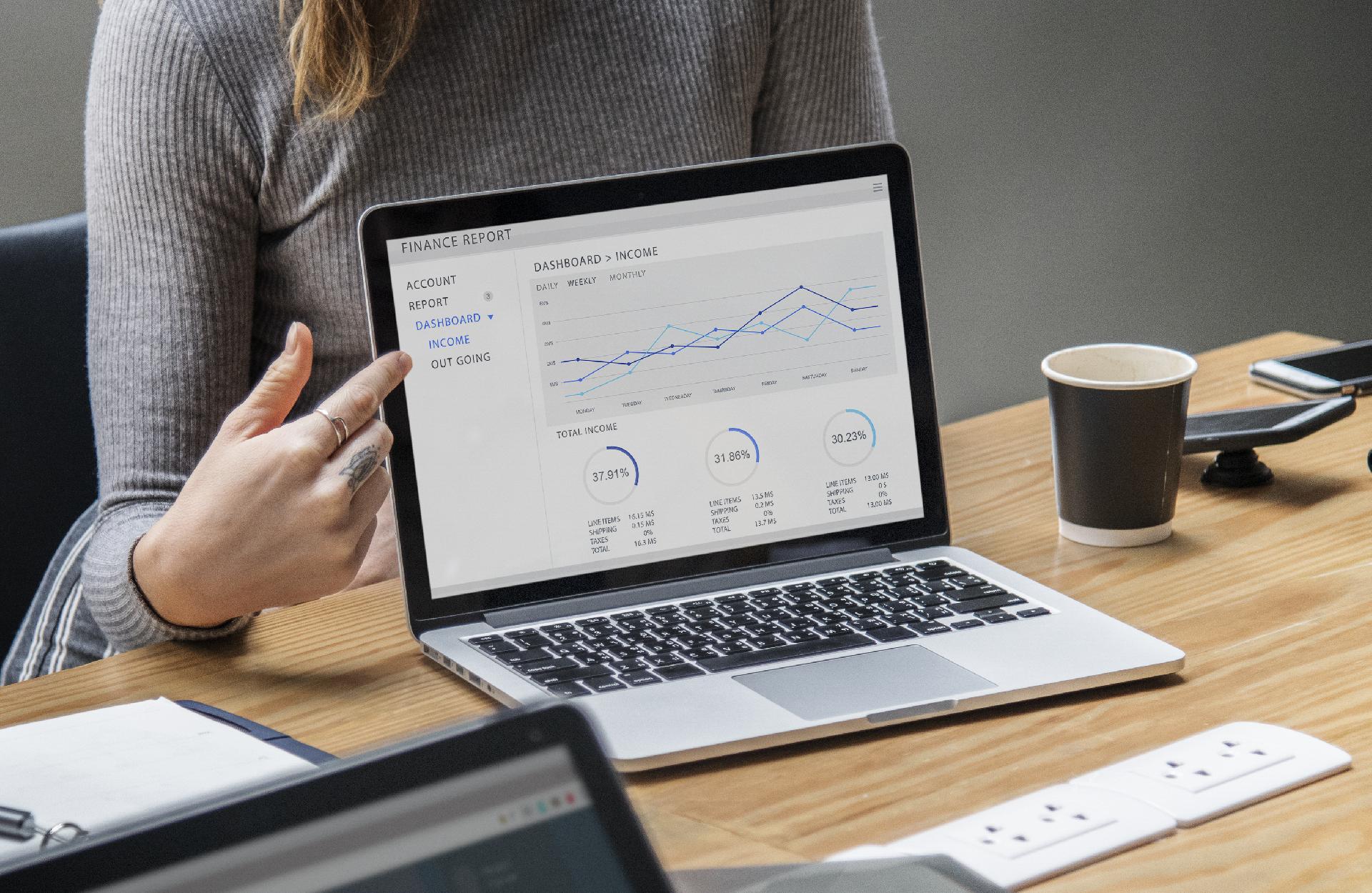****Need to record my audio clip here on Portfolio review services***** Make sure to mention – “we can do it for you”
The start of a new year is the perfect time to review your portfolio. If you have not been monitoring your portfolio on a regular basis, now is the time to resolve to do so in the future. Doing your own review periodically (quarterly or at least yearly) will help you understand wether you are on course to meeting your goals, or wether you need to change your strategy or tactics. The objective of such a review is to catch mistakes and to correct your course on a timely basis, with the ultimate goal of improving your results
01. How a Review Can Improve Returns
After the end of every calendar quarter, a portfolio needs to be reviewed to make sure that it is achieving your desired results within acceptable risk and other constraints, such as cash flow requirements and tax considerations
In my experience speaking with investors, I can tell you that it is a rare individual who takes the time to do such a review, even though a regularly scheduled portfolio review is the foundation of a constructive and successful investment program. After all, how else can you determine if you are on track? How else can you assess when and how to change direction
Many individual investors tend to look at the bottom line on their brokerage statements to determine progress—am I ahead or behind this month compared to last month? Indeed, this is one quick way to gauge success or failure, but it stops short of putting things into meaningful context upon which decisions can be based
Lack of objective monitoring may also explain why investors are likely to sell at market bottoms and sit on the sidelines as markets rebound. A study conducted by investment research firm Dalbar concluded that individual investors underperform the market due to the fact that they enter and exit their investments at the wrong time
According to the Investment Company Institute’s analyses of money flows, individuals pull money out of stock investments at the bottom of the market, preventing them from participating in a recovery, and buy at the peak, just in time to lose money
The timing problem is also borne out by Morningstar’s measure of “investor return,” which is a dollar-weighted figure that measures the impact of cash flows on returns when investors move out of a mutual fund by redeeming shares or into a mutual fund by buying shares. Investors’ performance has significantly lagged those of funds’ actual return.
*****Need to insert Table and reference language from article if we can get the tables to appear clear*******. Images here aaii.com/financial-planning/article/the-portfolio-review-why-it-is-important-and-how-to-do-it
Moreover, investors tend to measure their happiness or lack thereof from valleys to peaks and peaks to valleys. It’s better to judge performance based on returns compared to risk and whether investment objectives are met
For example: looking backward, an investment with a return of 10% per year over a 10-year period with a standard deviation (a measure of return volatility: the higher the standard deviation, the higher the risk) of 40% is not as good an investment as another that produced the same returns with a standard deviation of 20%.
***Table language inserted here — then images****



02. Post Crash Objectives
After riding down their investments during a correction or a crash, you often hear people say they want to “recover their losses.” Investors need to keep in mind that their results are driven by how they define their goals. Having a goal of recovering losses as quickly as possible is a dangerous mission that sets you up to make speculative bets
Think of what would motivate a money manager who was given this task. Assume this is his charge from a client: “I lost 50% of my retirement savings. I want you to make up that loss in six months. Any money you make beyond that you can keep.
Given this assignment, the manager has a lot to gain if he performs and nothing to lose if he does not. So, his incentive is to do everything he can to drive returns as high as possible as quickly as possible. If he bets wrong, he loses nothing other than the time he puts into the project. So, he can use leverage and make bets with abandon. The reality is that some managers are incented this way and do take chances that you may not want to take with your own money
That brings us back to risk. Your investment objectives need to take into account the fact that you may want to recover your “losses” but not at all costs—that is, you do not want to lose money while you are trying to recover your losses. That is something you will want to address when you set your investment objectives—those objectives will guide your actions and provide a roadmap with risk/return goals. The investor who works without a roadmap has no way to judge where he is going; all he can judge is where he has been
03. What You Should Consider
The following considerations will help you set a framework for your review.
Time. How much time and effort are you willing to devote to your review? What is realistic for you? One day a year? One day a quarter? More, or less
Experience. How experienced are you as an investor? If you are a less experienced investor, your review may not be thorough, but still a big improvement over not opening your statements
Investments. What types of investment vehicles do you hold? Structured products, options, futures, and stocks call for more frequent monitoring, whereas mutual funds, bonds, and broadly diversified vehicles may take less time and effort to monitor
Size of portfolio. No matter how large or small your portfolio, it is all you have, so it is important to you. However, the size of each account comprising the portfolio will make a difference and call for a different level of review. If you have a $500,000 IRA and a $5,000 taxable account, you should pay more attention to the IRA
Risk. Risk is always a consideration for your overall portfolio and for each and every holding. Every investment must be assessed from the point of view of liquidity (can I get my money out?), potential for success (expected results are realized), potential for failure (how much can I lose?), and how it fits with the other investments in the portfolio
Demands of the portfolio. If the portfolio is constructed to produce income, it takes more time and effort to monitor results and a greater understanding of the bond markets, interest rates and inflation than a growth portfolio. For example, if you are withdrawing $10,000 but the portfolio is only producing $5,000 in income, the principal is being drawn down. Therefore, you need to address your future income needs as part of the review
Complexity. The level of complexity of your overall financial picture will determine the information you will need to consider in your review. You could have multiple goals, including a shorter-term more conservative goal (college tuition for your kids) and a longer-term more aggressive goal (retirement)
Diversification and correlation. Until the market meltdown of 2008, those who believed in modern portfolio theory assumed that asset allocation and diversification among asset classes (stocks, bonds, and money markets) would protect them from a major decline of their portfolio. To be truly effective, asset classes do need to be relatively uncorrelated to make a difference in results
Leverage. If you borrow to invest and you make correct decisions, you can boost your returns. If your decisions are wrong, you can wipe out your savings. Leverage, in the form of margin borrowing (your broker lends you money) or embedded in a product (such as a leveraged ETF or a leveraged closed-end fund) must be understood and monitored
Benchmarks. When studying how an individual holding (or your overall portfolio) is performing, you always need to compare to an appropriate benchmark. The S&P 500 index is a widely accepted benchmark for the overall stock market and the Barclay’s Aggregate Bond index is the benchmark for the bond market. When it comes to monitoring results of individual holdings, you’ll want to compare your results to sectors and industries
Thesis. What do you expect the economic and tax environment to look like in the future? How will your thesis help you preserve what you have while giving you the opportunity to grow your assets for the future?
Taxes. Your personal tax situation will determine whether you need to add tax expertise to your review. You may need to consider various tax-advantaged strategies such as a Roth IRA conversion, the savers tax credit, tax-free municipal bonds or harvesting tax losses
Retirement plans. Are you maximizing your company retirement plans? If you are self-employed, are you taking advantage of high-deductible retirement opportunities, such as pension plans
Ownership. If you are married, should your assets be held in joint name? Should they be held in individual name? Should you have trusts set up to side-step the probate process? Are beneficiary designations taken care of
Tools. What tools do you need to perform your review? Do you subscribe to databases and research services
Training. If you use such tools, do you need special training to make sure that you are getting the most of these services
Timeframe. The review needs to consider different timeframes. For example, when you are investing for the long term, interim results may not be positive—or perhaps worse, they may be too positive. How will those short-term results affect your decisions
Alone or with an adviser? If you are working with an adviser, you will need to address the role the adviser is playing. If you have a fiduciary relationship, your role will likely be to receive reports and contribute to the definition of investment objectives. If you are working with a sales professional who works on commission, you will need to review each recommendation and accept or reject it based on your assessment
Costs. Your costs in transactions, research, tools, and advisory services are all part of the overall equation
Returns. All investing has to be considered in light of real returns, which means after taxes—and after inflation. How are your investments being taxed? What is the current inflation rate
PORTFOLIO REVIEW STEPS
Step 1: Situation Analysis
Determine how much time and effort you would like to spend on your review. Determine the tools and resources you will need to make your review meaningful. Determine what you would like your review to achieve. For example, a more experienced investor will want to have the review be detailed enough to guide the investment selection and deselection process. Less-experienced investors will want to compare their results against their objectives and adjust accordingly.
Step 2: Review Results
Investment performance is all about results, but how you view the results is equally as important as what those results are. A good place to start is to ask how the actual returns look relative to the level of risk taken. For example, if your portfolio is 100% stocks, you should measure your returns against the S&P 500 index for different periods. Results should also be measured relative to your goals.
Realize that positive results may not be immediate, but rather delayed. Investors who started buying depressed stocks in late 2008 and early 2009 were well rewarded later in 2009 even though the early returns were abysmal.
Retirement portfolios typically have the objective of generating desired cash flow today and tomorrow, plus a long-term goal of capital appreciation for the future as inflation eats away at spending power.
Step 3: Review Risk
You will want to measure your results (returns) in light of the risk you have assumed to achieve those returns. And, you will want to lessen the likelihood of losses in order to preserve your capital. (For example, you can sell a liquid investment if it drops a certain percentage from your purchase price.) Be aware of changes in your risk profile: In good markets, people tend to accept more risk than they do in bad markets.
How do you measure risk? One method is to measure standard deviation. You can use a spreadsheet or purchase a portfolio management program to do so (one example is Fund Manager from Beiley Software, Inc. at www.fundmanagersoftware.com). A high standard deviation shows higher risk. Without a risk measure, you can’t put returns into context.
Step 4: Revisit Investment Objectives
What are your goals for your portfolio? Do you want to have enough money to live on for the rest of your life after you retire? What do you want your investments to do for you? For example, one investment objective will be to save and invest enough money to be able to retire. Nothing can be more important in directing investment decisions than setting appropriate investment objectives: These are the goal posts that define the end game.
Step 5: Review Each Holding
You should know how each holding contributed to the overall results of the portfolio through an “attribution analysis.” Attribution can be viewed by asset class (growth, income, cash), sector (using the 10 Standard and Poor’s sectors—namely, consumer staples, consumer discretionary, energy, financials, healthcare, industrials, information technology, materials, telecommunications, and utilities), and even more finely, by industry and sub-industry.
You can do such an analysis on your own using a spreadsheet. Look at the holding and see if it added to or detracted from your overall results. Following attribution closely helps you make buy and sell decisions and determine whether a particular holding is in line with your goals. Also consider the role the investment is playing in the portfolio, since each holding should have a reason for being. Does the holding provide the potential for producing income, or capital appreciation, or stability?
Step 6: Re-Assess Your Tactics
Each tactic should have a logical basis (a thesis) and an entry and exit strategy. For example, you believe the market is declining, so you buy puts or an inverse ETF for protection. An inverse ETF makes money when the underlying index is declining. You monitor these holdings closely and close out the positions according to plan.
Step 7: Revisit Your Strategy
Strategy sets the stage for results. Work on a thesis of what to expect from the financial markets. For example, during the disturbing market of 2007 and 2008—especially in September 2008 when Lehman Brothers filed for bankruptcy—one strategy was to get out of the way, to protect assets as much as possible. The operative thesis was that the market was in a state of severe uncertainty, therefore, run for cover. Then, as markets started to stabilize, some theorized that our government would step in to protect the banking system; so the strategy was to buy severely depressed bank stocks. The former was a defensive strategy; the latter was offensive, opportunistic and quite risky. Both are acceptable if understood and closely monitored.
Step 8: Retool Your Portfolio
After performing this review, you’ll find areas that you’ll want to improve. Reconsider your holdings based on your investment objectives, strategy, and desired results.
Conclusion
Once you know where you are going by setting appropriate investment objectives, your portfolio review will help you reach your destination. How? By identifying problems and mistakes that you can correct midcourse. Much like a pilot, your job is to stay on course so that you can reach your destination safely and in a timely manner.
Original Article published in American Association of Individual Investors, written by Julie Jason, author of “Managing Retirement Wealth: An Expert Guide to Personal Portfolio Management in Good Times and Bad”, 2011.






